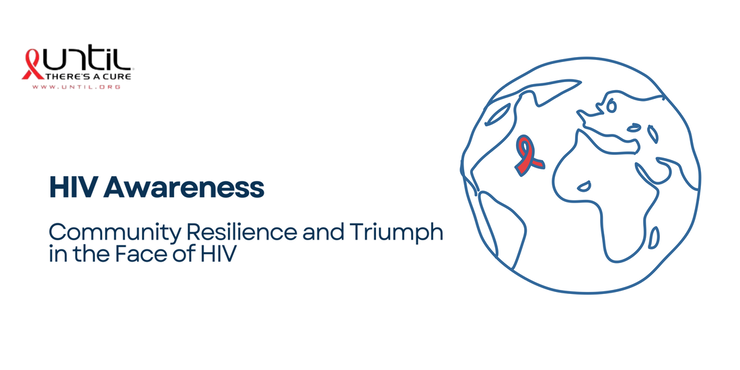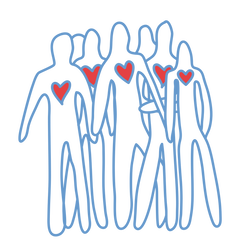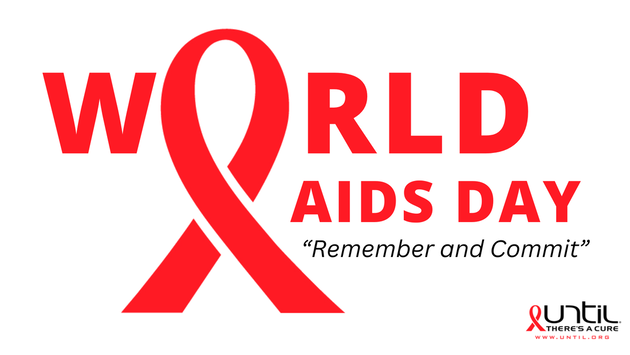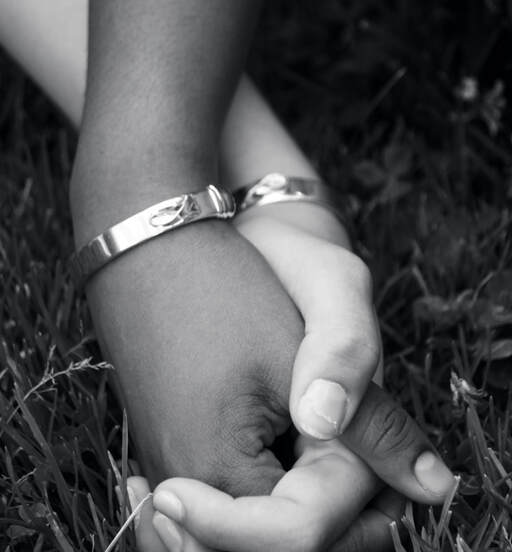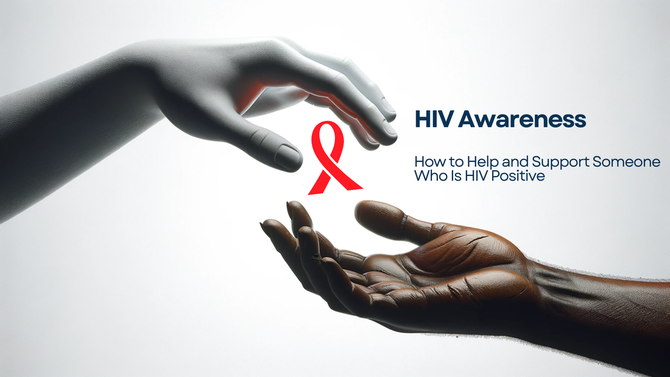|
The global challenge of HIV/AIDS, profoundly impacting millions, extends beyond medical concerns, representing a test of community strength and resilience in the HIV community. From the early days marked by fear and uncertainty to a period characterized by hope and progress, the fight against HIV/AIDS has evolved into a narrative of significant triumphs. This journey exemplifies the human spirit's ability to surmount overwhelming adversities. Through grassroots efforts, education, and medical advancements, including the pursuit of an HIV vaccine, communities globally have united in the fight against HIV/AIDS, underscoring the critical role of HIV awareness. It reflects on the importance of HIV awareness days and campaigns in educating about HIV symptoms in women, the meaning of HIV positive, and the broader implications of the virus. By raising HIV awareness, we contribute to a more informed and responsive society, capable of supporting people living with HIV and advancing toward an era without HIV. The Early Days of HIV/AIDSInitial Global Response During the early 1980s, the rise of HIV/AIDS as a global health crisis sparked widespread fear and confusion. The initial response, marked by apprehension and urgency, was marred by misinformation, stigma, and insufficient HIV awareness. By 2022, global new HIV infections had dropped to an estimated 1.3 million, a substantial decline from the 1995 peak of 3.2 million, indicating a 59% decrease from the peak and a 38% reduction since 2010. Community's Role in HIV AwarenessGrassroots Initiatives Communities, often the first responders to the HIV/AIDS crisis, have been crucial in HIV awareness and support. Local initiatives, such as neighborhood health workshops and peer education programs, have effectively disseminated knowledge about HIV, including symptoms and prevention. These grassroots efforts, especially significant in the black community and among women, have played an instrumental role in educating about HIV transmission and reducing stigma, empowering people living with HIV and those affected by the epidemic. Local Leadership Local leadership has been crucial in combating HIV/AIDS. Community leaders, many of whom are survivors or closely linked to affected individuals, spearheaded campaigns for safe practices, healthcare access, and destigmatization. Their genuine experiences and voices have added authenticity and urgency, inspiring wider participation in the cause. Building Resilient Communities Grassroots movements, central to HIV awareness, have educated and empowered communities to advocate for their rights and healthcare needs. They've fostered resilience, enabling tailored responses to the HIV/AIDS epidemic. This empowerment has been pivotal in shaping HIV policies, improving access to HIV treatment and clinics, and ensuring the needs of those living with HIV/AIDS are met with respect and dignity. Tackling Stigma and DiscriminationThe Stigma Around HIV HIV/AIDS, often enveloped in stigma, presents a barrier as formidable as the virus itself. This stigma, fueled by misconceptions and fear, has led to widespread discrimination, notably hindering effective HIV awareness and responses. Strategies for Overcoming Stigma Communities and activists have combated stigma through education and open dialogue. By sharing accurate information and personal stories, they've challenged myths, fostering a more inclusive and understanding environment for those living with HIV. Stories of Resilience Personal narratives of those affected by HIV/AIDS have been powerful in breaking down stigma. These stories, highlighting resilience and hope, have shifted public perception, promoting empathy and support for those battling the virus. Advances in Medical TreatmentProgress in HIV Treatment Significant advancements in HIV treatment, particularly effective antiretroviral therapies, have revolutionized the prognosis from a fatal diagnosis to a manageable condition. By the end of 2022, 29.8 million people with HIV (76% [65–89%] of all people living with HIV) were accessing antiretroviral therapy (ART) globally, a substantial increase from 7.7 million in 2010. These treatments have notably enhanced life expectancy and quality for those living with HIV, contributing to global HIV response and prevention efforts. Importance of Accessible Healthcare Accessible healthcare is vital in this progress. Ensuring that everyone, regardless of background or location, can access these life-saving treatments is crucial for controlling and eventually eradicating HIV/AIDS globally. Personal Triumphs: Stories of Hope from People Living with HIVInspirational Individual and Community Stories Countless individuals and communities have turned their HIV battles into inspiring tales of hope. Their journeys of resilience and courage offer profound insights into the human spirit's strength. Importance of Support Networks These stories often highlight the crucial role of support networks. Family, friends, and community groups provide essential emotional and practical support, playing a key role in the journey towards health and acceptance. Sustaining Community EffortsOngoing Need for Awareness and Support The fight against HIV/AIDS, a crucial global health challenge, continues. Persistent efforts in HIV and AIDS awareness, along with providing support, are vital to sustain the advancements achieved and to assist those impacted by the virus. Despite progress, around 630,000 people died from AIDS-related illnesses worldwide in 2022, nearly 98,000 adolescent girls were infected with HIV in 2022 alone. 71% of new infections are among adolescents ages 10 to 19, highlighting the ongoing need for awareness and support. Future Challenges and Opportunities In the future, the challenge lies in harmonizing new medical advancements, like effective HIV treatment and potential vaccines, with community-driven efforts. This presents an opportunity to utilize advancements in HIV medicines and technology for broader outreach, fostering global HIV response and developing inclusive health policies that cater to everyone affected by HIV/AIDS, including those living with HIV and populations at higher risk like the black community and women. ConclusionIn this crucial phase of our united battle against HIV/AIDS, the role of ongoing HIV awareness is fundamental. It forms the bedrock of our achievements and paves the way for future victories. As we advance, we must uphold the beacon of HIV awareness, shedding light on the path for others and dismantling the barriers of ignorance and apprehension. Your proactive participation in this endeavor is not merely valuable; it is indispensable. Together, by expanding knowledge and fostering understanding, we create a solid alliance against HIV/AIDS. Join us in this vital journey: actively engage in raising HIV awareness and support those affected. Together, we can change the course of HIV/AIDS and shape a healthier future for all. Get involved now and contribute to this vital change. FAQsWhat role does community play in HIV awareness?
Communities are vital in spreading HIV knowledge and empowering affected individuals through local initiatives and education programs. How have medical advancements impacted HIV/AIDS treatment? Medical advancements, especially antiretroviral therapies, have transformed HIV into a manageable condition, improving life expectancy for those affected. What challenges are associated with HIV/AIDS stigma? HIV/AIDS stigma leads to discrimination and misinformation, which can be overcome through education, dialogue, and sharing personal stories. Why is sustaining HIV awareness efforts important? Sustaining HIV awareness is crucial for maintaining progress, supporting affected individuals, and integrating medical advancements with community efforts.
1 Comment
World AIDS Day, observed on December 1st each year, is a time for reflection, remembrance, and renewed commitment in the global fight against HIV/AIDS. It provides an opportunity to raise awareness about the impact of the virus, honor those who have lost their lives to AIDS-related illnesses, and show solidarity with those living with HIV. Reflection on the PastWorld AIDS Day serves as a reminder of the progress made in the fight against HIV/AIDS and the challenges that still lie ahead. Over the years, there have been significant advancements in treatment and prevention, with improved access to antiretroviral therapy, increased awareness, and a reduction in new infections. However, it's crucial to acknowledge the lessons learned from the past, including the stigma and discrimination associated with HIV/AIDS, and work towards creating a more inclusive and understanding society. Listen to our Empowering Voices podcast where a community of activists, celebrities', nurses, interns, and partners come together to discuss what HIV/AIDS means to them Remembering Those Who Have DiedRemembering the individuals who have lost their lives to AIDS-related illnesses is an essential aspect of World AIDS Day. This remembrance is a call to action, urging communities, governments, and organizations to continue working together to prevent further loss of life. It's an opportunity to honor the resilience of those affected and emphasize the importance of compassion and support for those living with HIV. Commitment to the Future Looking forward, the commitment to finding a cure for HIV/AIDS remains our top priority. While progress has been made, there is still work to be done to ensure universal access to prevention, treatment, care, and support. This involves not only medical advancements but also addressing social and economic factors that contribute to the spread of HIV and hinder access to healthcare. Funding for Research and Support Securing adequate funding for HIV/AIDS research, prevention, and treatment is critical. Governments, international organizations, and private entities should continue to invest in research efforts to develop new therapies, vaccines, and strategies to combat the virus. Additionally, funding should support initiatives that promote education, awareness, and community-based support programs. World AIDS Day serves as a reminder that the fight against HIV/AIDS requires a comprehensive and collaborative approach. It involves individuals, communities, healthcare professionals, policymakers, and organizations working together to achieve the goal of an AIDS-free world. The commitment to ending the HIV/AIDS epidemic remains crucial, and each person has a role to play in creating a future without the burden of this devastating disease.. . Until There's A Cure Discover how a simple bracelet, a unique piece of jewelry, drives The Bracelet Initiative, uniting people globally for social change and empowerment Empowering Change Globally with The Bracelet InitiativeLife is filled with challenges, and positively impacting society is essential. We all contribute to enhancing fairness, justice, and environmental stewardship. Empowerment means equipping individuals and communities with tools and confidence for their future. Central to this mission is "The Bracelet Initiative," a unique strategy for global change. This initiative revolves around the power of a simple object: The Bracelet. These bracelets are more than jewelry; they're symbols of awareness, unity, and action, representing a commitment to important global causes. Wearing one is a powerful statement for advocacy, showing support for vital issues, and joining a larger movement for worldwide change. "The Bracelet Initiative" exemplifies how small actions can lead to significant shifts, leveraging our collective power for a lasting global impact. Join us in exploring the impact of The Bracelet Initiative. We'll uncover stories and successes linked to these bracelets, demonstrating their unifying force for shared goals and how each bracelet tells a tale of hope, empowerment, and collective effort. The Origin of The Bracelet Initiative Historical Background: How and Why the Initiative Started The Bracelet Initiative, symbolizing empowerment, arose to combat global health issues like HIV/AIDS. It began as a symbol for universal awareness and grew into a movement marked by diverse bracelets, from simple gold to custom designs, symbolizing support and awareness, and reflecting a powerful spirit of empowerment. The Founding Organization's Mission and Vision The Bracelet Initiative champions community empowerment, fostering global solidarity through awareness bracelets. These simple yet poignant symbols unite people, transcending fundraising to create visible, tangible support for diverse causes worldwide. The Symbolic Significance of the Bracelet in the Context of the Initiative In this initiative, wearing a bracelet is a pledge of support and advocacy. Each bracelet, whether a simple gold bracelet, a rose gold bracelet, or adorned with an AIDS ribbon, represents a commitment to its cause. These aren't mere jewelry pieces; they are badges of honor and tools for education, symbolizing hope and solidarity. The Impact of a Simple BraceletThe Bracelet Initiative, through its simple yet profound symbol, has become an influential tool for change. This seemingly modest accessory carries a powerful message, transforming how individuals and communities engage with global issues like HIV/AIDS. How the Bracelet Works as a Tool for Change The bracelet's influence is profound, silently voicing support and solidarity. As an awareness bracelet, it initiates conversations about its cause, fostering education and perception shifts. This empowering jewelry, more than a mere accessory, sparks dialogue and action, addressing vital issues with each bracelet worn. Stories and Testimonials from Impacted Individuals Many individuals wearing these bracelets have personal ties to their cause. For example, a woman donning a red bracelet might recount her family's battle with HIV/AIDS, adding a personal dimension to the statistics. Others wear them to visibly support friends or community members fighting the disease, symbolizing their solidarity and empathy through this simple yet meaningful accessory. Statistical Data Showing Effectiveness The research underscores the Bracelet Initiative's role in fostering social change. Communities with prevalent bracelet-wearing, particularly for HIV/AIDS awareness, demonstrate enhanced understanding and involvement. In the U.S. alone, the HIV/AIDS pandemic persists with an estimated 1.2 million people infected, highlighting the need for continued awareness and support. Fundraising through these bracelets, like red ones for HIV/AIDS, generates substantial contributions, crucial for research, support, and education. This initiative shows how a simple accessory can effectively raise awareness, shift attitudes, and build supportive, solidary communities. Global Reach and Diversity The Bracelet Initiative, with its iconic red and other designed bracelets, has become a global symbol, uniting diverse communities. Its simplicity and meaningful message, particularly in combating HIV/AIDS, resonate universally. HIV remains a major global public health issue, having claimed 40.4 million lives so far, with ongoing transmission in all countries globally. The WHO African Region is most affected, with 25.6 million people living with HIV, representing two-thirds of the global total. Like love or gold ribbon bracelets, it transcends cultural and demographic lines, symbolizing worldwide unity and support. Global Spread of The Bracelet Initiative Spanning from New York's vibrant streets to sub-Saharan Africa's remote villages, the bracelet adorns diverse individuals globally. Its universal presence, adapted to local contexts and challenges, highlights the initiative's success in bridging geographical and cultural gaps, uniting people under a common symbolic cause. Diverse Communities and Demographics Involved The Bracelet Initiative appeals universally, cutting across age, gender, and socio-economic lines. It draws support from students, celebrities, and activists, impacting a diverse range from marginalized groups in developing nations to individuals in affluent societies, demonstrating its wide-reaching influence and inclusive nature. Significant Impact in Different Regions In regions like Africa, the bracelet symbolizes hope and resilience against the HIV/AIDS epidemic, while in Western countries, it reminds us of the ongoing struggle and need for continuous awareness and support. A report from UNAIDS reveals that in 2022, 4,000 young women and girls became infected with HIV every week, with only 42% of districts with high HIV incidence effectively addressing the issue. Each region's unique interaction with the bracelet showcases its adaptability and relevance, making it a truly global initiative. The Bracelet Initiative's extensive reach and diversity are powerful testaments to its effectiveness in uniting people from diverse backgrounds to support a shared cause. It's more than just jewelry; it's a symbol of global solidarity and a beacon of hope for a better future. Partnerships and CollaborationsThe Bracelet Initiative's growth and impact owe greatly to key strategic partnerships and collaborations, crucial in enhancing its reach and effectiveness. Key Partnerships The Bracelet Initiative has formed partnerships with various entities, including non-profits addressing health and social issues and corporations dedicated to social responsibility. These collaborations have provided access to a wide array of resources, expertise, and networks, significantly expanding the initiative's impact. Role of Collaborations Strategic alliances with businesses, influencers, and NGOs have crucially enhanced the Bracelet Initiative's impact. High-profile figures wearing women's bracelets have raised its profile, and business partnerships have strengthened distribution and fundraising. Collaborations with NGOs guarantee the efficient use of funds, directly supporting the initiative's objectives. Success Stories These partnerships have yielded significant victories, including increased funding for research and support, heightened HIV/AIDS awareness, and strengthened unity among awareness bracelet wearers. The dynamic collaboration has been key in advancing the initiative, demonstrating how collective efforts can lead to meaningful change. Challenges and Overcoming ThemScaling The Bracelet Initiative faced challenges, from logistical hurdles in production and distribution to maintaining consistent public engagement. Implementation Challenges One of the primary challenges has been managing the logistics of producing and distributing the bracelets worldwide. Ensuring quality and timely delivery, especially in remote areas, posed significant hurdles. Strategies for Overcoming Challenges To overcome these, the initiative leveraged technology for efficient production and distribution networks. Engaging local communities in the distribution process also played a crucial role. Lessons Learned These challenges have imparted valuable lessons, such as the importance of local partnerships, adaptability in strategy, and community involvement's power, vital for similar initiatives to drive sustained social change through resilience and innovation. How to Get Involved Engaging with The Bracelet Initiative is simple yet impactful. Buy a bracelet, such as rose gold or simple gold piece, from our jewelry stores; proceeds support our cause. Additionally, you can volunteer, and share stories and memories linked to these bracelets on social media or in discussions, broadening our impact. ConclusionAs we conclude, let's reflect on the essence of The Bracelet Initiative. It symbolizes hope and proactive steps, where even small actions can lead to significant outcomes. Imagine each bracelet, be it an elegant rose gold bracelet or a classic silver plate cuff, acquired from renowned jewelry stores or through jewelry online, representing a step towards a greater goal. These bracelets are more than mere adornments; they embody stories of empowerment and unity from diverse cultures. This initiative is a journey of unity, overcoming obstacles, and forging strong connections. It demonstrates the remarkable results of collective efforts. Here's the key takeaway: every action counts. By wearing one of these bracelets, you ignite discussions and connect with a worldwide community. Whether you're purchasing a bracelet, engaging in volunteer work, or simply raising awareness about the initiative, you're contributing to a larger narrative. Explore unique and hand-carved African Art bracelets to support care services and education in areas affected by AIDS. Let's maintain this drive, one bracelet at a time. Get involved, narrate your experiences, and be part of this remarkable movement. United, we form a powerful collective. Your donation can make a difference, and together, we can continue to fight for a world free of AIDS. FAQsWhat is The Bracelet Initiative?
It's a movement using bracelets as symbols to promote global social change and empowerment. How can I participate in The Bracelet Initiative? Buy a bracelet to support the cause, volunteer, and share its story to amplify its impact. What impact does The Bracelet Initiative have? It raises awareness, funds, and unites people globally in support of various social causes. In the face of a global health challenge that has deeply affected millions, the significance of HIV awareness stands out. HIV/AIDS, a pressing epidemic, demands our collective focus and understanding. But promoting HIV awareness goes beyond mere data; it's about fostering a world where those living with HIV are met with empathy, respect, and dignity. HIV, or Human Immunodeficiency Virus, attacks the body’s immune system, particularly the CD4 cells, essential for fighting infections. Without timely intervention, HIV can evolve into AIDS (Acquired Immunodeficiency Syndrome). The body can't completely eradicate HIV, signifying that once infected, it remains a lifelong companion. As of 2022, approximately 39.0 million people globally live with HIV, with 630,000 individuals having succumbed to AIDS-related complications that year. Strategies in the health sector against HIV/AIDS have influenced communities of diverse backgrounds. While advancements in HIV treatment provide hope for those affected by HIV to lead meaningful lives, the journey continues. At the heart of this fight is HIV awareness, knowledge, and collective action. Moving forward, this blog will delve into the intricacies of HIV awareness, highlighting ways to uplift and support people living with HIV. Let's come together in this exploration, grasping the profound impact of HIV awareness on our global community. United, we can advocate for a brighter, more informed tomorrow, Until There’s A Cure.. The Importance of HIV AwarenessHow awareness leads to understanding and reduces stigma HIV awareness dispels myths and stigma, promoting empathy and inclusivity. It emphasizes regular testing and understanding of viral loads, crucial for prevention and fostering informed, supportive communities The direct correlation between increased awareness and decreased transmission rates Increased HIV awareness is key to reducing transmission. Understanding transmission, testing, and prevention like PrEP leads to safer practices and health dialogues, creating knowledgeable communities that curb the spread of HIV. Debunking Myths Surrounding HIV/AIDSCommon misconceptions about HIV transmission and treatment Persistent myths fuel fear about HIV, falsely linking it to casual contact or labeling it incorrectly as a "gay disease." Yet, with effective HIV medicines and antiretroviral therapy, those diagnosed can lead healthy lives. The dangers of misinformation and the role of awareness in combating myths Misconceptions about HIV/AIDS can perpetuate stigma and lead to unsafe behaviors. Awareness campaigns, especially during events like "HIV Awareness Days" or "World AIDS Day", are crucial in dispelling these myths. By disseminating accurate information, we can challenge ignorance, reduce the risk of HIV transmission, and foster understanding. For those living with HIV, this knowledge is empowering, emphasizing that accurate awareness is essential for both prevention and support. Emotional and Psychological Aspects of HIVThe emotional toll of an HIV diagnosis An HIV diagnosis often evokes intense emotions, from fear to sadness. The societal stigma, especially when people living with HIV don't receive understanding, amplifies these feelings. Coupled with reactions from loved ones, it's more than a physical challenge. It deeply impacts one's mental state and overall well-being. How HIV awareness can foster empathy and understanding HIV awareness campaigns are crucial for understanding the emotional challenges of those affected, fostering empathy and insight. They encourage society to look past the medical aspects, reducing isolation and nurturing a compassionate, caring community environment. Raising HIV Awareness in Your CommunityOrganizing and participating in HIV awareness campaigns and events Community involvement strengthens the HIV fight through seminars, walks, and workshops, expanding knowledge. Observing World AIDS Day boosts outreach, uniting communities in education and collective action against the HIV epidemic. But we need to come together more than once a year. The role of schools, workplaces, and community centers in raising awareness Institutions shape society; schools teach HIV facts, workplaces foster stigma-free environments, and community centers host awareness events. These efforts engage diverse groups, enhancing HIV knowledge community-wide. Supporting the HIV-Positive Community Through AwarenessThe power of personal stories: Sharing experiences to raise awareness Personal stories hold the power to deeply connect with audiences. When people living with HIV recount their experiences, it demystifies the condition, dispelling myths and fears. Such narratives evoke empathy, challenge biases, and spotlight the daily struggles and victories of people living with HIV.. Elevating these narratives cultivates a more understanding and empathetic society. Encouraging open conversations about living with HIV Open dialogues about HIV in forums, support groups, and gatherings are vital to dispel myths and reduce stigma. They allow sharing of concerns, advice on prevention and treatment, and foster education on HIV's challenges, underscoring the importance of compassion and unity. The Stigma Surrounding HIV and the Need for AwarenessHistorical and cultural origins of HIV-related stigma The historical bias linked to HIV/AIDS is deeply entrenched. Originating in the 1980s, the epidemic was met with uncertainty, dread, and false information. It was often wrongly linked to specific groups, resulting in broad discrimination. Cultural myths intensified this bias, casting blame on people living with HIV. Recognizing this past is vital to address current prejudices. How increased awareness can challenge and change societal perceptions Raising HIV awareness is crucial to dispel ignorance. Educating the public on HIV realities challenges myths, fostering empathy and understanding. As knowledge spreads, fear diminishes, biases shift to support, and we edge closer to a future without HIV stigma. Safe Practices Stemming from HIV AwarenessEmpowering individuals with knowledge and tools is key to combating HIV. By understanding and implementing safe practices, we can pave the way for a healthier, more informed society. The Significance of Regular Testing: Recognizing Symptoms and Preventing HIV Regular HIV testing is crucial for prevention and treatment, allowing for informed decisions and safer interactions. Early detection leads to better health outcomes and lowers transmission risks. Promoting testing's importance and ease can increase participation, nurturing a proactive approach to health. Promoting the use of Pre-exposure prophylaxis (PrEP) and Post-exposure prophylaxis (PEP) through awareness campaigns PrEP and PEP stand as essential strategies in HIV prevention. PrEP, taken before potential HIV exposure, significantly reduces the risk. On the other hand, PEP, used after exposure, can prevent the virus from taking hold. Their effectiveness is rooted in HIV awareness. By initiating targeted campaigns, we can educate the public on these preventive tools, promoting widespread use and understanding of these vital measures Advocacy and HIV AwarenessThe Role of Organizations in Prioritizing HIV Awareness: Global organizations are key in combating HIV/AIDS through awareness, research, and support. Supporting these groups enhances the fight against the disease. Their campaigns and educational efforts are essential in disseminating accurate information and fostering an informed, compassionate community. The Impact of Advocacy on Policy Changes and Public Perception: Advocacy shapes societal perspectives and influences policy, challenging myths and combating stigma. Champions of HIV awareness advocate for health-supportive strategies, leading to significant policy reforms and improved healthcare for people living with HIV. Amplified efforts shift societal attitudes towards empathy, highlighting HIV awareness's crucial role in community discourse. Educating the Next GenerationEducating the young about HIV fosters a compassionate, informed future. Through curriculums and youth campaigns, we nurture understanding for those living with HIV. Integrating HIV Awareness into School Curriculums Education shapes the next generation's views and actions. By weaving HIV awareness into school curriculums, students gain precise, in-depth insights about the virus early on. This knowledge not only enlightens but also nurtures empathy for those living with HIV. Schools can detail the virus's science, transmission methods, and preventive steps. Discussing HIV's social and emotional facets can diminish stigma, fostering a culture of empathy and acceptance. The Role of Youth in Spearheading HIV Awareness Campaigns Youth, brimming with energy and innovation, are crucial in leading HIV awareness. Skilled in digital platforms, they engage broad audiences with compelling campaigns. Involving them brings new ideas, keeping messages fresh and appealing. Their advocacy inspires peers, generating a cascade of awareness and collective action among the younger generation. Transformative Power of HIV AwarenessHIV awareness is pivotal, serving as a catalyst for acceptance and change. It equips individuals with crucial knowledge, dispels myths, and fosters support for those living with HIV. Our deep dive into this topic reveals that well-informed communities are the bedrock of progress and transformation. However, awareness must translate into action. We all have the potential to be change-makers, advocating for HIV awareness in our lives and communities. Whether through dialogue, participating in campaigns, or supporting initiatives, our actions contribute to a larger impact. In pursuit of a future free from HIV stigma, our collective actions can light the way. Embrace your role as a change agent, and let's advance the mission of "Until There's A Cure." Transition from awareness to action—get tested, educate others, and uplift the community. Your conversations, shared stories, and contributions are instrumental in creating a stigma-free society. Engage with us on this journey; your voice is a powerful agent of change. Get involved, donate, or learn more to aid in the fight against HIV. FAQsHow does HIV awareness combat stigma?
HIV awareness dispels myths and fosters empathy, creating an environment where those with HIV are treated with respect. By championing this mission, we move closer to a stigma-free future. How can we support those living with HIV? By understanding their journey, promoting accurate HIV knowledge, and engaging in awareness campaigns. Such support is pivotal for a brighter, more informed future. What role do the youth play in HIV awareness? Youth amplify HIV awareness through digital campaigns and school programs, inspiring peers to join the cause. Their involvement ensures the message remains relevant and engaging for younger generations. |
|
Until There's A Cure © 2024
© COPYRIGHT 2024. ALL RIGHTS RESERVED |
501(c)3
EIN # 94-3181306 |

